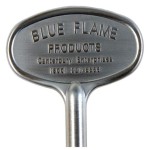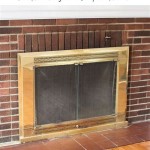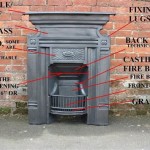```html
Wood Burning Outdoor Fireplace: A Comprehensive Guide
A wood burning outdoor fireplace provides a focal point for outdoor living spaces, offering warmth, ambiance, and a gathering place for relaxation and entertainment. These fireplaces extend the usability of patios and backyards beyond the typical warm-weather months, allowing for enjoyment during cooler seasons. Selecting and installing a wood burning outdoor fireplace requires careful consideration of various factors, including design, materials, safety regulations, and local ordinances. This article provides a comprehensive overview of wood burning outdoor fireplaces, covering key aspects to aid in informed decision-making.
Choosing the Right Design and Materials
The design of an outdoor fireplace significantly impacts both its aesthetic appeal and functional performance. A wide array of designs are available, ranging from traditional brick structures to contemporary metal constructions. The selection should complement the existing architectural style of the house and the overall landscape design.
Traditional brick or stone fireplaces offer a classic and durable option, blending seamlessly with many home styles. These materials provide excellent heat retention, allowing the fireplace to radiate warmth for an extended period. However, brick and stone fireplaces typically require more extensive construction and can be more costly to install than other options.
Metal fireplaces, often constructed from steel or cast iron, offer a more modern aesthetic and can be easier to install. These fireplaces are typically lighter than brick or stone structures and may be available in prefabricated kits, simplifying the installation process. Metal fireplaces can also be designed with features such as built-in grills or cooking surfaces, adding to their versatility.
The choice of materials should also consider the local climate. In regions with harsh winters, materials that are resistant to freezing and thawing cycles are essential to prevent damage and ensure the longevity of the fireplace. Proper sealing and weatherproofing are also crucial for protecting the fireplace from the elements.
Beyond the primary construction materials, the firebox lining is another important consideration. Firebrick is commonly used to line the firebox, providing insulation and protecting the outer structure from the intense heat of the fire. The firebox should be sized appropriately for the intended use, allowing for sufficient air circulation and efficient combustion.
Safety Considerations and Regulations
Safety is paramount when operating a wood burning outdoor fireplace. It is imperative to adhere to all applicable safety guidelines and regulations to prevent fire hazards and ensure the well-being of users. Local building codes and fire ordinances often dictate specific requirements for the construction and operation of outdoor fireplaces.
Maintaining a safe distance between the fireplace and any combustible materials is crucial. This includes trees, shrubs, fences, and overhanging structures. A minimum clearance of 10 feet is generally recommended, but it is advisable to consult local regulations for specific requirements. Clear the area around the fireplace of any dry leaves, grass, or other flammable debris.
A spark arrestor is an essential safety feature for any wood burning fireplace. This screen or mesh covering prevents embers and sparks from escaping and potentially igniting nearby vegetation or structures. Most jurisdictions require the use of a spark arrestor on outdoor fireplaces.
Never leave a fire unattended. Always have a responsible adult present to monitor the fire and ensure that it remains contained within the firebox. Keep a fire extinguisher or a readily available source of water nearby in case of emergencies.
Be mindful of wind conditions. Strong winds can carry embers farther and increase the risk of fire. Avoid using the fireplace during periods of high wind. Ensure that the fireplace is situated in a location that is sheltered from prevailing winds.
Regular maintenance is essential for ensuring the safe operation of the fireplace. Inspect the fireplace regularly for cracks, damage, or deterioration. Clean the firebox and chimney periodically to remove creosote buildup, which is a highly flammable substance. A professional chimney sweep can provide a thorough inspection and cleaning.
Educate all members of the household, including children, about fire safety practices. Teach them how to safely build and maintain a fire, and emphasize the importance of never playing near an active fire.
Installation and Maintenance
The installation of a wood burning outdoor fireplace can range from relatively simple for prefabricated kits to more complex for custom-built structures. Regardless of the installation method, it is important to follow the manufacturer's instructions and adhere to all applicable building codes.
For prefabricated kits, the installation typically involves assembling the components according to the provided instructions. This may require some basic construction skills, but it is generally a manageable task for experienced do-it-yourselfers. Ensure that the fireplace is placed on a level and stable foundation. A concrete pad is often recommended to provide a solid base and prevent settling.
Custom-built fireplaces require more extensive construction and are typically best left to experienced contractors. This involves laying the foundation, constructing the firebox and chimney, and finishing the exterior with the desired materials. Ensure that the contractor is licensed and insured, and obtain references before hiring them.
Proper maintenance is crucial for ensuring the longevity and safe operation of the fireplace. Regular cleaning is essential for removing ash and creosote buildup. A brush or vacuum can be used to clean the firebox after each use. The chimney should be inspected and cleaned at least once a year, or more frequently if it is used heavily. A professional chimney sweep can provide this service.
Inspect the fireplace regularly for cracks, damage, or deterioration. Repair any damage promptly to prevent further problems. Apply sealant or waterproofing to protect the materials from the elements. Replace any worn or damaged parts, such as firebrick or grates.
Proper storage of firewood is also important for maintaining its quality and preventing infestations. Store firewood in a dry, well-ventilated area away from the house. Cover the firewood to protect it from rain and snow. Avoid storing firewood directly on the ground, as this can promote rot and insect infestations.
Using seasoned firewood is essential for efficient combustion and minimizing smoke. Seasoned firewood has been allowed to dry for at least six months, reducing its moisture content. Green or unseasoned firewood produces more smoke and creosote, which can increase the risk of chimney fires.
By following these guidelines, individuals can enjoy the warmth and ambiance of a wood burning outdoor fireplace while ensuring the safety and longevity of the structure. Understanding the design options, safety regulations, and maintenance requirements is essential for making informed decisions and creating a safe and enjoyable outdoor living space.
```
Outdoor Fireplaces Charlotte Fireplace Design Coogans Build

Outdoor Fireplace Kits Stonewood S Cape Cod Ma Nh Ct

58 In Outdoor Fireplace Wood Chiminea Burning Fire Pit With Storage Pf01chiminea The Home Depot

Outdoor Fireplace Builder Richmond Va Dreams

42 Castlewood Outdoor Wood Burning Fireplace Fine S Gas

Outdoor Wood Burning Fireplace

Endless Summer 45 In H Steel Wood Burning Outdoor Fireplace With Chimney And Included Grate Cooking Waf1013c The Home Depot

Endless Summer Black Wood Burning Firepit With Cooking Surface

Gas Logs Vs Wood Burning Outdoor Fireplaces Green Okie

Suoy Curtis 56 69 In Wood Burning Outdoor Fireplace With Broe Highlights 169476 The Home Depot








